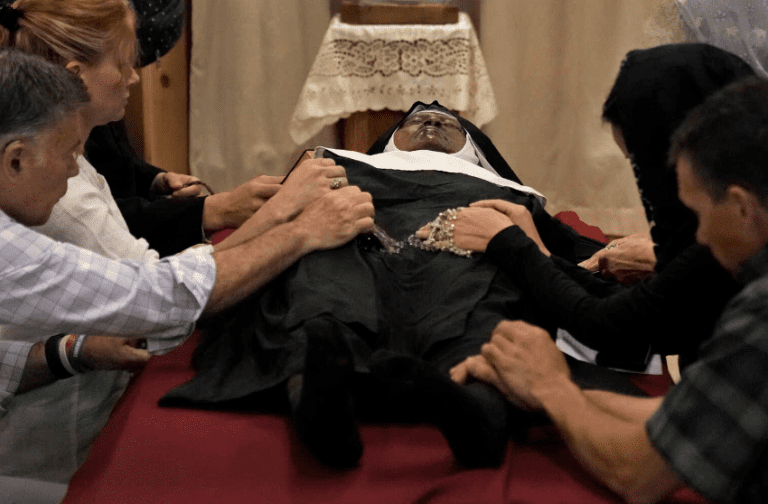
A Missouri nun who died in 2019 has become a central point for some faithful after her body was recently exhumed, and her remains are reportedly mostly intact. According to CBS News, Sister Wilhelmina Lancaster, who died at 95, was exhumed last month, almost four years after she died in 2019, and her body was placed in a glass shrine.
Lancaster’s story has recently soared across media after reports that her body hasn’t decomposed while buried. Reportedly, she wasn’t embalmed after her death and was placed in a wooden casket, adding interest to the story. CBS noted that the report had sent thousands flocking to see her body for themselves at the chapel at the Benedictines of Mary, Queen of Apostles in Gower, Missouri.
The nuns published an explainer on their website to “clarify” some facts, including why the first exhumation unfolded, with so much information about Lancaster spreading.
The explanation reads, “Our Abbey had been planning the addition of a St. Joseph Shrine within the oratory for quite some time, including the reinterment of the remains of our beloved foundress, Sister Wilhelmina. Last month, in preparation for the construction of the shrine, we exhumed her, having been told to expect bones in the highly moist clay of Missouri, as she was buried in a simple wooden coffin without any embalming whatsoever four years ago.”
The nun said they wanted to carry out all of these acts in “privacy.” However, “the discovery of what appeared to be an intact body and perfectly preserved religious habit created an unexpected twist” in their plans. It turns out that a private email sent out regarding the matter was posted publicly. With news quickly spreading, the nuns’ secret find became public.
The nuns wrote, “God works in mysterious ways, and we embrace His new plan for us.” The usually quiet religious women said their lives have surprisingly not been highly impacted by the groups of people flocking to the small town. They thanked local law enforcement and volunteers for helping keep order during the chaos. The nuns said they would allow the process to unfold to study what is happening to Lancaster’s body.
Bishop James V. Johnston, Jr., of The Diocese of Kansas City-St. Joseph also stated that the “widespread interest” in the case is understandable and that important questions have been raised. Johnston said, “Visitors should not touch or venerate her body or treat them as relics.” He also encouraged prayer throughout the investigative process as interest continued to spread.
While some see the lack of decomposition as a sign of a miracle, others aren’t so sure. Dr. Rebecca George, an anthropology professor at Western Carolina University in Cullowhee, North Carolina, called the state of the body “typical” in light of the coffin and the clothing the nun wore during burial.
Dr. Nicholas Passalacqua, an associate professor and director of forensic anthropology at Western Carolina University, agreed, noting that it typically takes five years for a body to decompose into a skeletal form. Still, others might point to a reported crack in the coffin and the purported appearance of mold to question just how sealed off and protected the environment could have been.


